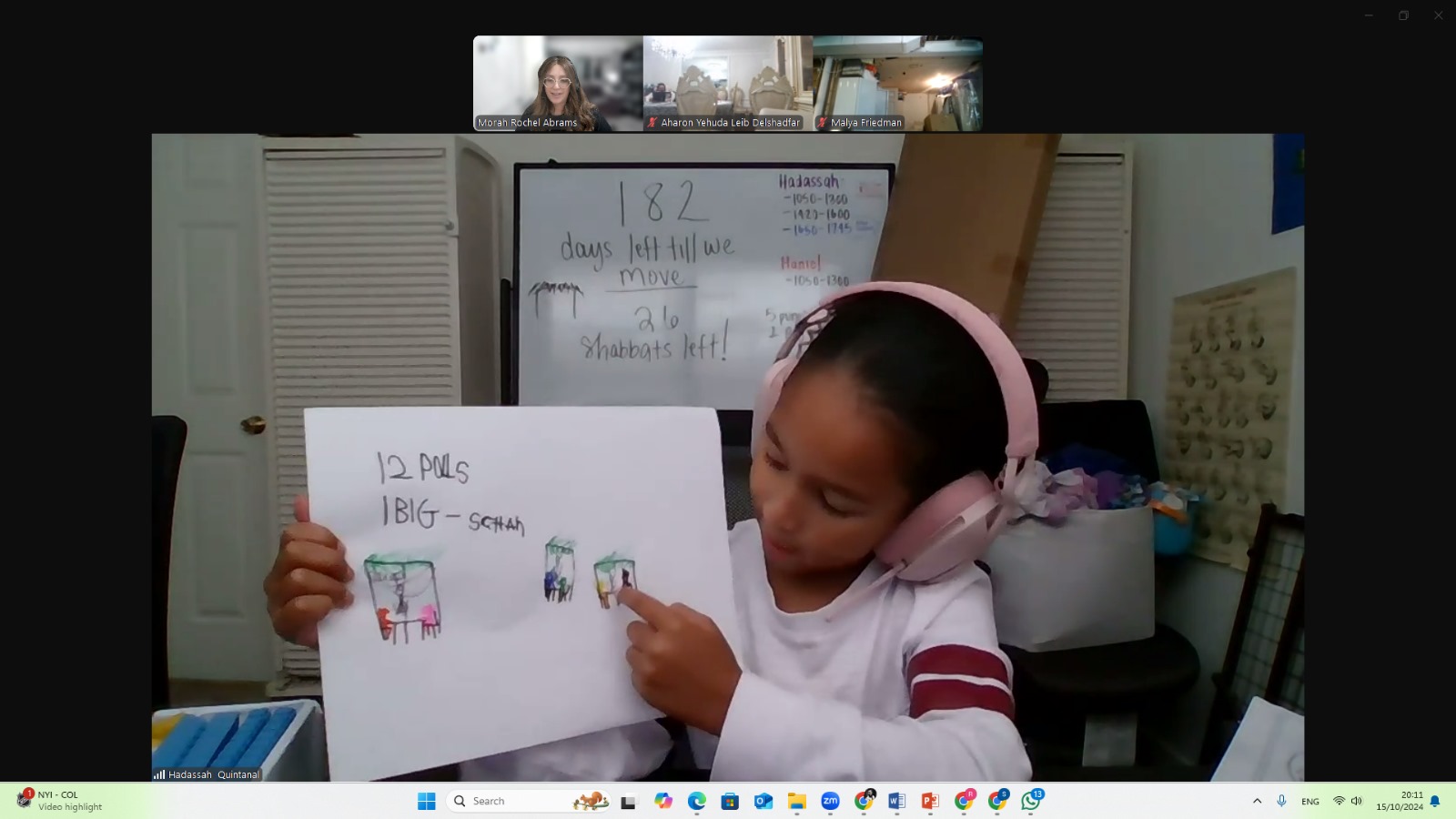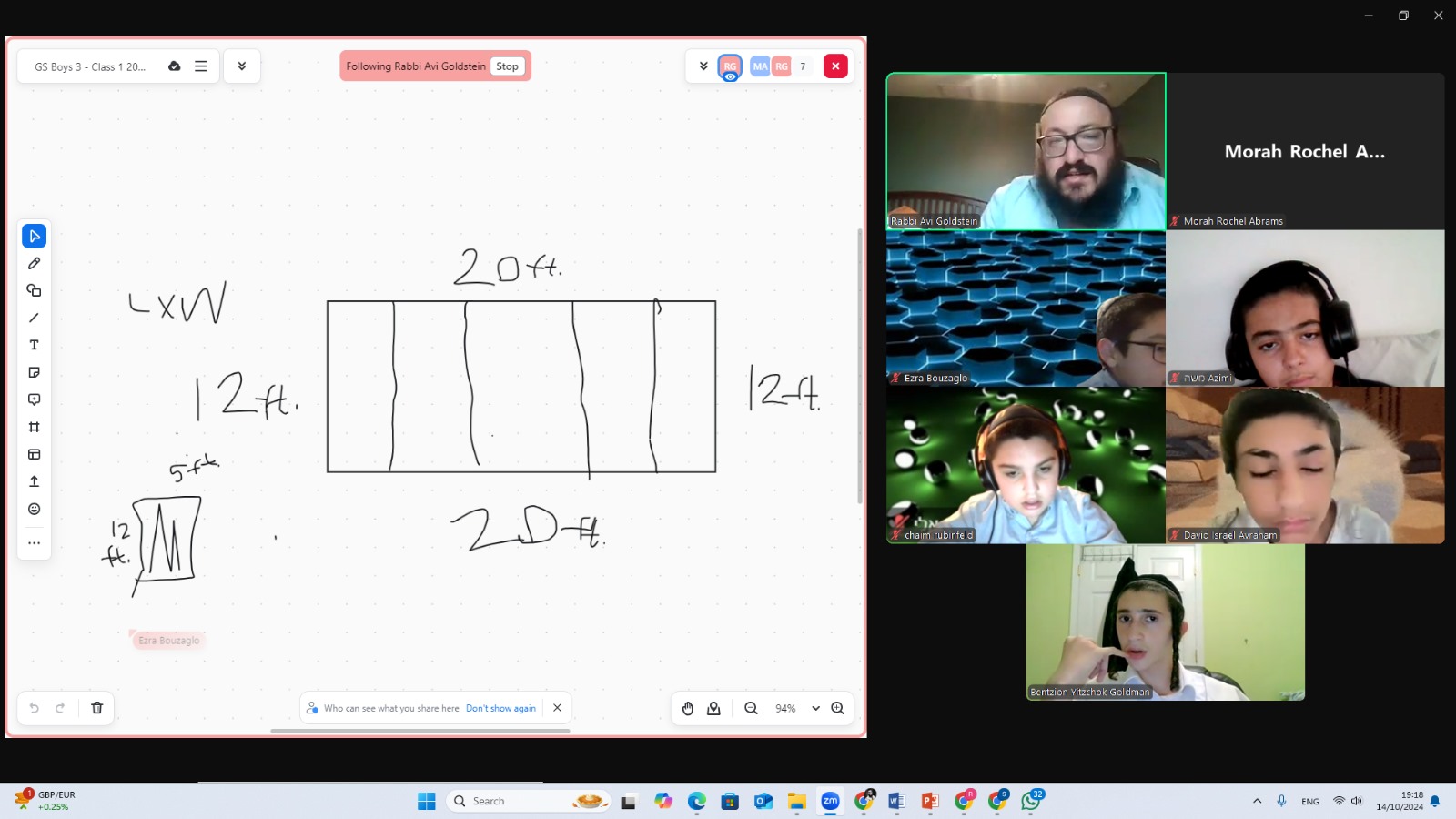Celebrating Sukkot at Jewish Online School: A Multi Curricular Approach to Learning and Connection

|
The Jewish holiday of Sukkot is a special time for joy, unity, and connection. Families build a sukkah, a temporary outdoor structure decorated with greenery and symbols of the season, to gather and celebrate. The holiday also includes the mitzvah (commandment) of gathering the four species—the lulav (palm branch), etrog (citron fruit), hadassim (myrtle branches), and aravot (willow branches)—which symbolize unity and togetherness. At Jewish Online School (JOS), we embrace the spirit of Sukkot by teaching about the holiday in a multi curricular way. We believe that by using various subjects and activities, students can engage with Sukkot in ways that are meaningful to them, helping them fully understand the holiday’s significance. Here’s a look at how Sukkot comes alive across different classes at JOS. Morah Peshy’s Judaics Class: Building a 3D Sukkah ModelIn Morah Peshy’s class, students explored Sukkot through hands-on creativity. They built a 3D model of a sukkah, decorating it with information they learned about the holiday. Through this engaging project, students gained a strong visual and tactile understanding of the structure and symbolism of the sukkah, reinforcing the meaning behind this special tradition. This activity helped make Sukkot feel real and relevant, allowing students to connect with the holiday in a way that went beyond words. Rabbi Avi’s Math Class: Measuring the SukkahIn Rabbi Avi’s math class, students connected math concepts to the holiday by discussing the dimensions and perimeters of their sukkah. This lesson helped students understand the importance of accurate measurements in constructing a kosher sukkah, applying math in a real-world context that deepened their appreciation for Sukkot’s details. This approach highlighted that math skills can be valuable and even necessary when celebrating traditions, adding an exciting, practical twist to learning. AS3 Class: Learning About Ushpizin with a Rotating WheelIn AS3, students learned about the Ushpizin, the spiritual guests traditionally welcomed into the sukkah each night of Sukkot, using a rotating wheel they created. Each section of the wheel represented one of the guests, giving students a hands-on way to learn about the holiday’s values of welcoming and hospitality. Through this interactive activity, students discovered the importance of kindness and inclusion—values that are central to Sukkot—while engaging in a fun and creative project. General Studies: Designing a Sukkah Blueprint and Materials ListSukkot inspired learning in General Studies as well, where students designed a blueprint for their own sukkah and made a list of supplies needed to build it. Presenting their designs to the class gave them the opportunity to combine creativity with practical planning skills. This project-based learning approach taught them that learning can be fun, especially when it involves working on projects inspired by real-world experiences. Science with Morah Chava: Exploring Structure and StrengthScience class with Morah Chava gave students a chance to explore Sukkot from a structural perspective. Using household items, they experimented to see how different shapes and materials affect a sukkah’s stability and strength. This activity connected the simplicity of the sukkah to important engineering principles, showing students how science and structure play a role in creating even the most basic of shelters. Conclusion: Learning and Celebrating as OneAt Jewish Online School, our multi curricular approach to Sukkot reflects the diversity of our students and the unity that Sukkot itself represents. Each class offers a unique way for students to connect with the holiday, bringing together art, science, math, and personal reflection. Just as the four species come together to complete the mitzvah, our students experience the joy of Sukkot through different lessons that suit each learner. By celebrating Sukkot in such a hands-on, engaging way, we help students build a lasting connection to the holiday and its values. We’re proud to make learning joyful, interactive, and memorable for everyone at JOS—so that Sukkot, and its warmth and unity, will stay with our students long after the holiday ends.
|

%20(2).png)
